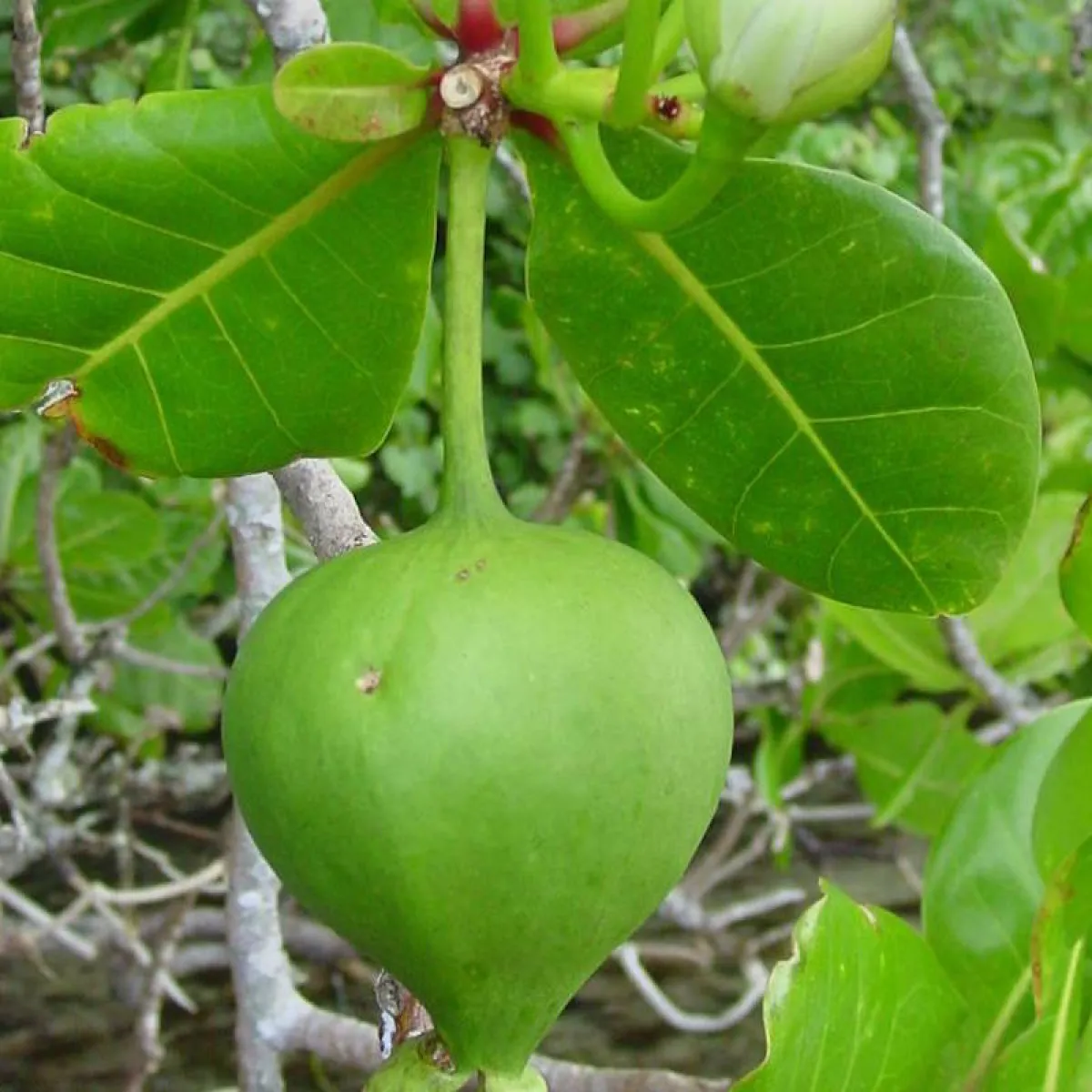
Fish-poison tree
Hutu (FP), Hotu (FP)
The fish poison tree is light and soft, it is a pale yellow and is used in the construction of canoes, in construction, and as fuel. Its almond-like fruit disseminates by floating, and it floats very well. Its nuts are used to catch fish since it contains a poison with ichthyotoxins. (Saponins: A molecule with properties of a detergent that is produced naturally by plants. They are somewhat toxic and can provoke cell death). Once the almond is grated, it can be used to fish in the lagoon by paralyzing or killing fish. This plant has medicinal properties and, with topical application, can treat stonefish (nohu) stings, sprains, headaches, or as a cicatrizant. This tree is often found on beaches and has birthed the expression: “hotu painu” when speaking of people without attachment (it is seen as negative). We also say that this tree has the mythical origin of a human heart. Its flowers and leaves are used ornamentally.
| Family | Lecythidaceae |
|---|---|
| Biogeographical status | indigenous |
| Life form | tree |
| Abundance on Tetiaroa | not common |
| Ecosystem on Tetiaroa | mixed forest, beach |
Butaud J.F., Gérard J., Guibal D., 2011. Guide des arbres de Polynésie française, bois et utilisations. 2e édition, Au vent des îles, 616 p.
Barrau J., 1971. Useful plants of Tahiti. Société des Océanistes, Paris, Dossier 8, 33 p.
Butaud J.F., 2014. Guide floristique, Rimatara, Rurutu, Tubuai, Raivavae. Direction de l’environnement, 1e édition, 131 p.
S: Society | T: Tuamotu | M: Marquesas | G: Gambier | A: Australs | FP: French Polynesia

